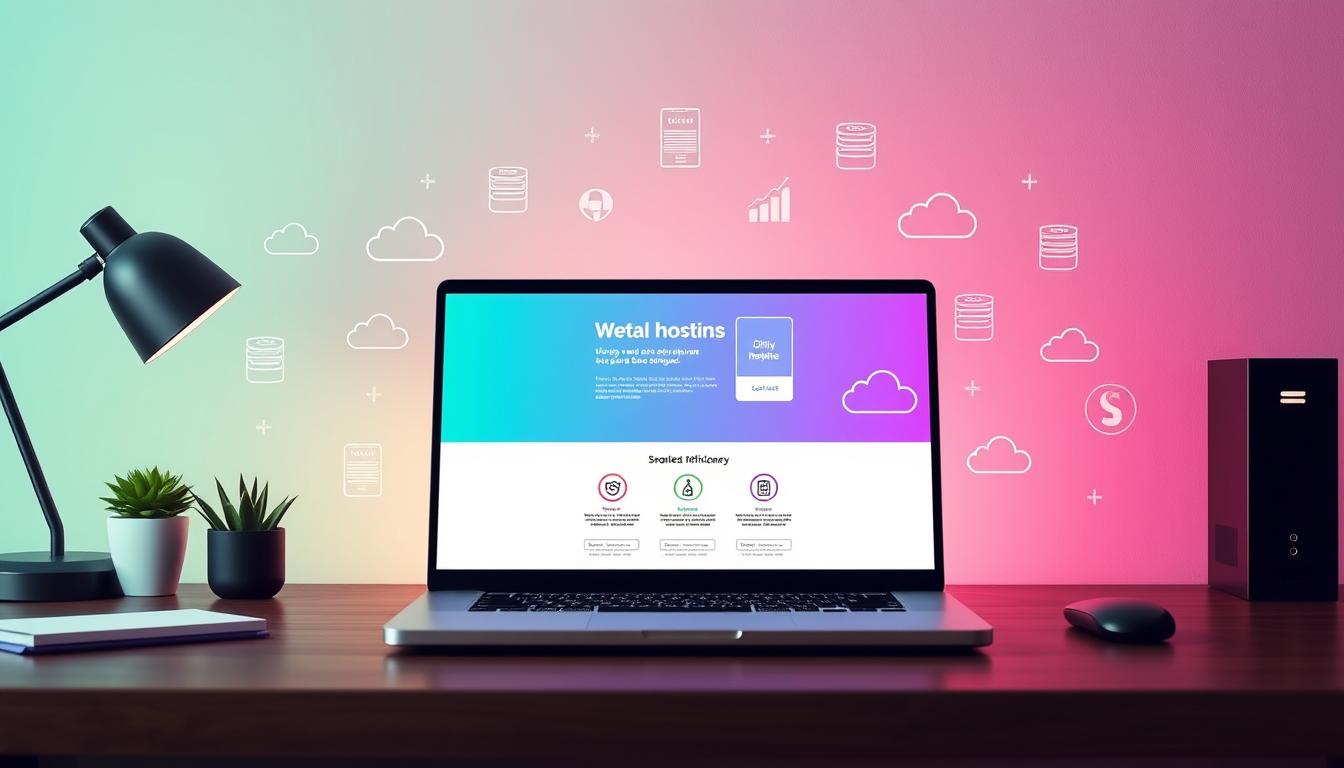**This blog contains my affiliate links**
Migrating your website to a new host can be a daunting task, but with the right approach, you can do it seamlessly without experiencing any downtime. In this article, we’ll guide you through the process step-by-step, helping you ensure a smooth transition to your new hosting environment.
Whether you’re looking to switch to a more affordable Namecheap plan, upgrade to a more robust hosting solution, or simply explore new shared hosting options, this guide will walk you through the key steps to ensure your website remains accessible and functional throughout the migration process.
Key Takeaways
- Prepare by backing up your existing website and database
- Choose the right new host that meets your website’s requirements
- Configure the new hosting environment and upload your website
- Update DNS settings to point to the new host
- Verify and test the new website to ensure a seamless transition
Preparation: Backing Up Your Existing Website
Before embarking on the migration process, it’s crucial to create a comprehensive backup of your existing website. This step is essential to ensure that you have a secure copy of your site, in case any issues arise during the migration. By taking the time to properly back up your website, you can rest assured that your content, images, and other critical assets are protected.
Creating a Complete Site Backup
To create a complete backup of your website, you’ll need to consider both your website files and your database, if applicable. Depending on the complexity of your site, this process may involve several steps, but it’s well worth the effort to ensure a seamless migration.
- Backup your website files: Use your Namecheap or shared hosting platform’s backup tools, or consider a third-party backup solution, to create a full backup of your website’s files and directories.
- Export your database: If your website relies on a database, such as MySQL or PostgreSQL, you’ll need to export the data to a file that can be easily imported into your new hosting environment.
By taking the time to create a complete backup of your existing website, you’re setting the stage for a successful migration to your new hosting provider.
“Backing up your website is like insuring your most valuable asset – it’s a small investment that can save you from a world of headaches down the line.”
Choosing the Right New Host
When it’s time to migrate your website to a new hosting provider, finding the right fit is crucial. As you explore your options, consider key factors such as server performance, uptime guarantees, customer support, and pricing. Researching various hosting solutions, including Namecheap’s shared hosting plans, can help you identify the best hosting provider to meet your specific needs.
Namecheap, a reputable web hosting company, offers a range of hosting packages to choose from, including their affordable shared hosting plans. Shared hosting is a popular choice for many website owners, as it provides a cost-effective and reliable solution without the need for extensive server management.
“Choosing the right hosting provider can make all the difference in the success of your website. Look for a host that not only meets your technical requirements but also provides excellent customer service and support.”
When evaluating potential hosting providers, consider the following:
- Server performance: Look for hosts that offer fast and reliable servers, ensuring your website loads quickly and efficiently.
- Uptime guarantees: Reputable hosts should provide uptime guarantees, ensuring your website is accessible to your visitors.
- Customer support: Opt for a host with responsive and knowledgeable customer support, ready to assist you with any issues that may arise.
- Pricing: Weigh the features and services offered against the cost to find a shared hosting plan that fits your budget and meets your needs.
By taking the time to research and compare different Namecheap hosting options, you can select the best possible solution for your website’s migration, ensuring a seamless transition without any downtime.
Configuring Your New Hosting Environment
Once you’ve chosen your new host, such as Namecheap or a shared hosting provider, it’s time to configure the hosting environment to match your website’s requirements. This process may involve setting up any necessary software and creating essential databases to ensure a seamless migration.
Setting Up Required Software
Depending on the content management system (CMS) or programming languages used by your website, you may need to install specific software on your new hosting environment. For example, if your site runs on WordPress, you’ll need to set up a WordPress installation. Similarly, if your website utilizes a particular programming language, such as PHP or Ruby, you’ll have to ensure that the necessary runtime environment is configured properly.
Creating Necessary Databases
Many websites rely on databases to store and retrieve content, user information, and other critical data. Before you can migrate your website, you’ll need to create the necessary databases on your new hosting environment. This process may involve setting up a MySQL, PostgreSQL, or another type of database, depending on your website’s requirements.
By carefully configuring your new hosting environment, you can ensure a smooth and seamless migration process, minimizing the risk of downtime or data loss. Remember to work closely with your new host, such as Namecheap or a shared hosting provider, to ensure that all the necessary components are in place before you begin the migration.
“Successful website migration is all about planning and attention to detail. Taking the time to properly configure your new hosting environment will pay dividends in the long run.”
Uploading Your Website to the New Host
With your new hosting environment set up, the next step is to upload your website files to the new server. This process can take some time, depending on the size and complexity of your website, so it’s important to be patient and monitor the upload progress closely.
When it comes to Namecheap hosting or any other shared hosting service, the method for uploading your website files may vary. However, most hosts provide user-friendly tools and interfaces to make this task straightforward.
- Use your host’s control panel or file management tools to access the directory where your website files should be uploaded.
- Locate the backup files you created earlier and initiate the upload process. Depending on your host, you may be able to drag and drop the files, or use an FTP (File Transfer Protocol) client to upload them.
- Monitor the upload progress and ensure that all files are transferred successfully. This may take several minutes or even hours, depending on the size of your website and the speed of your internet connection.
“Patience and attention to detail are key when uploading your website to a new host. Take your time, and don’t hesitate to reach out to your host’s support team if you encounter any issues.”
Once the upload is complete, you’ll be one step closer to a successful website migration. In the next section, we’ll cover the process of updating your DNS settings to point your domain to the new host.

Updating DNS Settings
Migrating your website to a new hosting provider is a delicate process that requires careful consideration. Once you’ve successfully uploaded your website to the new host, the next crucial step is to update your DNS (Domain Name System) settings. This step ensures that your domain name points to the correct hosting environment, enabling visitors to access your site without any disruption.
Locating Your Domain Name Registrar
The first task in updating your DNS settings is to identify your domain name registrar. This is the organization that manages the registration and administration of your domain name. Popular domain registrars include Namecheap, GoDaddy, and Google Domains. Locate your domain’s registrar and log in to their platform to access your domain’s settings.
Changing Nameserver Records
Once you’ve accessed your domain’s settings, you’ll need to update the nameserver records to point to your new hosting provider. Nameservers are the gateways that translate your domain name into the IP address of your website’s server. Typically, your new shared hosting provider will provide you with the appropriate nameserver information, which you can then input into your domain’s settings.
- Log in to your domain registrar’s platform.
- Locate the section for managing your domain’s nameserver records.
- Replace the existing nameserver information with the new nameservers provided by your new hosting provider.
- Save the changes to your domain’s settings.
It’s important to note that updating DNS settings can take some time to propagate across the internet, typically ranging from a few minutes to 48 hours. During this transition period, your website may not be immediately accessible, but once the changes have been processed, your visitors will be seamlessly directed to your new hosting environment.
“Updating your DNS settings is a critical step in the website migration process. Ensure that you follow the instructions provided by your new hosting provider to ensure a smooth transition.”
Verifying and Testing the New Site
Before making the final switch to your new host, it’s crucial to thoroughly test your website to ensure everything is functioning as expected. This step is essential to avoid any disruption or downtime when migrating your website to the new Namecheap, hosting, or shared hosting environment.
Start by thoroughly checking your website for any broken links, whether internal or external. Ensuring all links are working correctly is paramount for providing a seamless user experience. Additionally, test all your forms, contact pages, and other interactive elements to confirm they’re operating flawlessly.
Next, verify that your website is displaying correctly across a variety of devices and browsers. This step helps to identify and address any compatibility issues that may have arisen during the migration process. Enlisting the help of friends or family members to test the site on their devices can be a valuable approach.
“Thoroughly testing your website before the final migration is the key to a successful and seamless transition to your new namecheap, hosting, or shared hosting provider.”
Once you’re satisfied with the overall performance and functionality of your website, you can proceed with the final steps of the migration process, confident that your new site is ready to go live.
- Check for broken links
- Test forms and interactive elements
- Ensure cross-device and cross-browser compatibility
By following these best practices, you can ensure a smooth and successful migration to your new Namecheap, hosting, or shared hosting platform, minimizing the risk of any downtime or disruption to your website and its visitors.
namecheap, hosting, shared hosting
When it comes to migrating your website to a new host, Namecheap is a reliable choice. As a renowned web hosting provider, Namecheap offers a range of hosting solutions, including shared hosting plans, that can be suitable for your website migration without any downtime.
Namecheap’s hosting plans are known for their exceptional reliability, top-notch performance, and outstanding customer support, making them a popular choice among website owners looking to migrate their online presence seamlessly.
- Namecheap‘s shared hosting plans are affordable and feature-rich, providing the perfect balance of affordability and functionality.
- Their robust infrastructure and cutting-edge technology ensure your website’s stability and fast loading times, even during the migration process.
- With Namecheap‘s user-friendly control panel and intuitive dashboard, managing your hosting account and website migration becomes a breeze.
“namecheap’s hosting solutions have been a game-changer for our website migration. Their reliable and scalable shared hosting plans allowed us to transition our online presence without any disruption to our operations.”
If you’re looking for a hosting provider that can seamlessly handle your website migration, namecheap is a top-notch choice that delivers the performance, security, and support you need to ensure a successful transition.
Redirecting Existing Traffic
Once you’ve successfully migrated your website to a new Namecheap hosting plan, it’s time to redirect your existing traffic to the new host. This seamless transition is crucial to ensure your visitors have a smooth experience and your search engine rankings remain intact.
Setting Up 301 Redirects
The key to a successful website migration is implementing 301 redirects. These permanent redirects instruct search engines and visitors to the old website URL to be automatically forwarded to the new, corresponding URL on your new Namecheap hosting plan. This not only preserves your search engine rankings but also ensures a seamless experience for your audience.
To set up 301 redirects, you’ll need to work with your new hosting provider or web developer. Typically, this can be done through your hosting dashboard or website management tools. Depending on your platform, you may need to edit your website’s .htaccess file or utilize a plugin or redirect manager.
- Identify all the pages and URLs that need to be redirected from your old website to the new one.
- Carefully map out the old URLs to the new, corresponding URLs on your Namecheap hosting plan.
- Implement the 301 redirects, either through your hosting dashboard or by updating your .htaccess file.
- Test the redirects thoroughly to ensure they are working correctly and directing visitors to the right pages.
By setting up 301 redirects, you’ll ensure that your existing traffic is seamlessly directed to your new Namecheap hosting environment, minimizing any disruption or loss of search engine visibility.
“Implementing 301 redirects is a crucial step in any successful website migration. It preserves your hard-earned search engine rankings and provides a seamless experience for your audience.”

Monitoring the Migration Process
Even after the successful transfer of your website to its new Namecheap hosting platform, the migration process doesn’t end there. Maintaining a close eye on your website’s performance is crucial to ensure a seamless transition and continued accessibility for your visitors. By closely monitoring the migration, you can promptly address any issues that may arise, safeguarding the user experience and keeping your online presence stable.
Here are some key steps to monitor the migration process:
- Regularly check your website’s uptime and page loading speeds. Utilize tools like Google PageSpeed Insights or GTmetrix to assess your site’s performance and identify any areas for improvement.
- Monitor your website’s traffic patterns and user behavior. Analyze metrics such as bounce rate, time on site, and conversion rates to ensure a seamless transition and no disruption to your audience.
- Thoroughly test all website functionalities, including forms, shopping carts, and multimedia elements, to confirm that they are working correctly on the new Namecheap hosting environment.
- Closely review your website’s analytics to detect any anomalies or unexpected changes in traffic, user engagement, or revenue, that could indicate potential problems.
- Stay vigilant for any error messages or server-related issues, and address them promptly to maintain your website’s stability and reliability.
By diligently monitoring your website’s performance during and after the migration, you can ensure a successful transition to your new Namecheap shared hosting plan, delivering a seamless experience for your visitors and safeguarding the growth of your online presence.
“Continuous monitoring and prompt issue resolution are the keys to a successful website migration.”
Conclusion
Migrating your website to a new host can be a straightforward process when you follow the right steps. By choosing a reliable hosting provider like Namecheap and taking the time to thoroughly prepare, test, and monitor your website, you can ensure a seamless transition without any downtime. Whether you’re seeking affordable shared hosting or more robust hosting solutions, the key is to approach the migration process methodically and with attention to detail.
Throughout this article, we’ve outlined the essential steps to migrate your website successfully, from backing up your existing site to updating your DNS settings and verifying the new site. By adhering to these guidelines, you can confidently move your online presence to a new hosting environment, delivering a consistent and positive user experience for your visitors.
Remember, the success of your website migration depends on your diligence and the quality of your hosting provider. With Namecheap‘s reliable shared hosting services and the guidance provided in this article, you can take the necessary actions to ensure your website continues to thrive on its new hosting platform.
FAQ
What is the first step in migrating my website to a new host?
The first step is to create a complete backup of your existing website, including your website files and database (if applicable). This will ensure that you have a copy of your website in case anything goes wrong during the migration process.
How do I choose the right new host for my website?
When selecting a new host, consider factors such as server performance, uptime guarantees, customer support, and pricing. Research various hosting providers, like Namecheap, which offers a range of hosting solutions, including shared hosting plans, to find the one that best fits your needs.
How do I configure my new hosting environment?
Once you’ve chosen your new host, you’ll need to configure the hosting environment to match your existing website’s requirements. This may include setting up any required software, such as content management systems or programming languages, as well as creating any necessary databases.
How do I upload my website to the new host?
With your new hosting environment set up, you can now upload your website files to the new server. Depending on the size and complexity of your website, this process can take some time, so be patient and monitor the upload progress closely.
How do I update the DNS settings to point my domain to the new host?
After uploading your website, you’ll need to update the DNS (Domain Name System) settings to point your domain to the new hosting environment. This involves locating your domain name registrar and changing the nameserver records to the new host’s nameservers.
How do I verify and test the new site before making the final switch?
Before making the final switch, thoroughly test your new website to ensure it’s functioning correctly. Check for any broken links, test your forms and other interactive elements, and make sure your website is displaying correctly across different devices and browsers.
How do I set up 301 redirects to redirect existing traffic to the new host?
Once you’re confident that your new website is working correctly, it’s time to redirect your existing traffic to the new host. This can be done by setting up 301 redirects, which will seamlessly redirect your visitors from the old website to the new one without causing any disruption or loss of search engine rankings.
How do I monitor the migration process after the transition is complete?
Even after the migration is complete, it’s important to monitor your website’s performance and continue to address any issues that may arise. This will ensure that your website remains stable and accessible to your visitors, maintaining a positive user experience.

